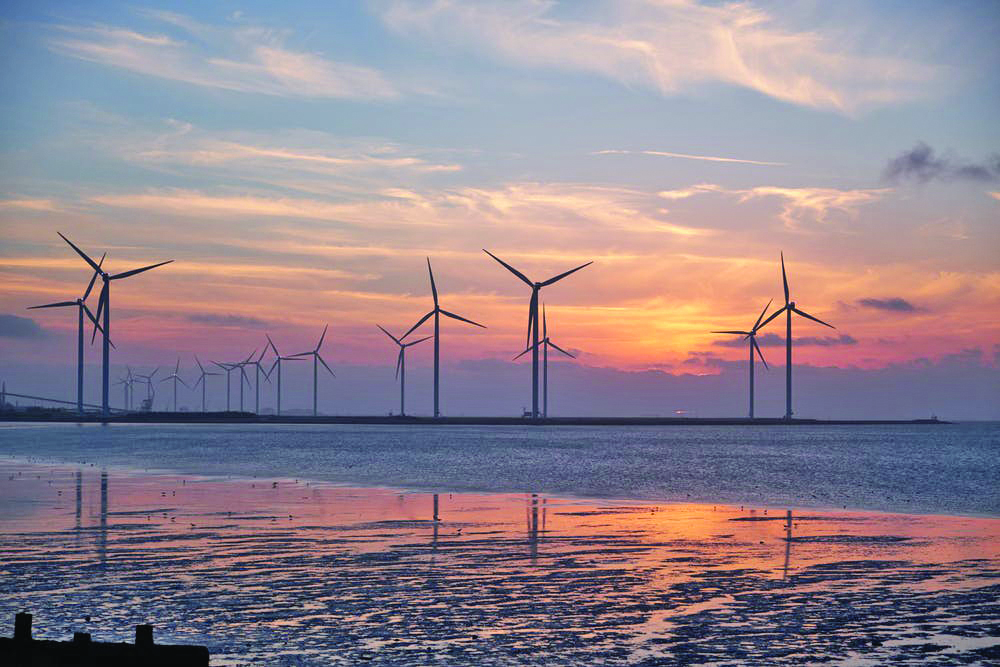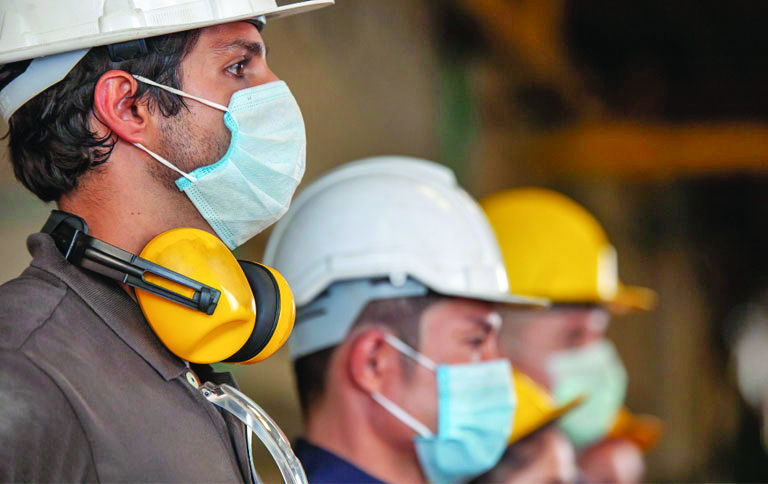According to the U.S. Department of Energy Office of Energy Efficiency and Renewable Energy, wind power in the United States has tripled in the past decade. It is now the largest source of renewable energy in the country. While the U.S. has been harnessing onshore wind energy for the past decade, the price of offshore wind per MW ($ per MW) has fallen to among the lowest energy cost per unit. As such, the U.S. is ramping up to capitalize on the offshore wind-energy market.
The increasing demand for renewable energy means a corresponding increase in the workforce required to build, operate, and maintain offshore wind farms. The wind has the potential to support more than 600,000 jobs in the U.S. by 2050.
With that comes a unique set of health, safety, and training challenges. Fortunately, the U.S. industry can shorten its learning process by looking at successful projects in the U.K. and leveraging best practices to ensure they have the medical staffing, team, and resources necessary to protect workers on offshore wind farms.
The United Kingdom (U.K.) leads the world in offshore wind capacity and has revised its offshore wind deployment target of 40 GW by 2030, up from the 10 GW it currently has.

Safety Challenges of Offshore Wind Farms
Offshore wind farms are, by their very nature, remote locations. In the event of an emergency such as a heart attack or an on-the-job injury, medical care must be administered on-site prior to evacuation.
The immense size of a wind turbine is also a challenge to worker safety. Today’s wind turbines can be upwards of 200 feet. Rescue skills are critical to reaching a worker who requires medical attention in a turbine.
The height also presents a danger from falls and falling objects. Throughout construction and maintenance, workers may be working hundreds of feet in the air. When they accidentally drop a tool or object and someone is hit, it can cause major injury — and, at the very least, it will hurt.
Wind farms are in areas with consistently windy conditions that can increase the risk for falls, especially as wind speeds rise to unsafe levels. Add to that extreme rapidly changing weather conditions that can occur miles offshore.
An offshore wind farm medical team is not just treating employees who visit the ship’s hospital; they must also be prepared to deliver care in a 200-foot-plus turbine or lower the patient to safety.
Further, as the demand for offshore wind energy in the U.S. rapidly increases, construction will be a 24/7 operation, which only increases the need for trained medical support staff and for training personnel on how to handle emergencies and provide advanced first aid.
The most common medical issues on offshore wind farms include crush injuries from tools or hydraulics, everyday illnesses of all types, dental emergencies, problems from ongoing medical conditions such as diabetes or asthma, serious medical emergencies such as heart attacks and strokes, and, of course, COVID-19.
These are complicated not only by the remote location of most wind farms, meaning medical help could be hours away, but also by the infrastructure. For example, Remote Medical International medics were called to help a 35-year-old who had become confused while on a turbine. The medic had to scale the tower, quickly diagnose the issue, extricate the individual from the turbine, and provide emergency treatment for, in this case, a stroke, until he could be evacuated. The interesting thing here is no one would have expected a 35-year-old to experience a life-threatening cerebral event.
Wind-Farm Construction vs. O&M Medical Needs
Identifying the right medical support services and resources for an offshore wind farm requires a solid understanding of their business operations with the flexibility to change the medical services provided as the wind farm’s needs shift with time.
During the initial construction phase, trained medical professionals must be deployed on jack-up vessels that serve as floating triage centers or clinics. These vessels provide medical support much like a general practitioner, treating minor abrasions, administering antibiotics, and addressing day-to-day medical concerns. Without this treatment, employees would have to go back to shore for even minor treatments. This results in significant costs and could disrupt construction depending on the individual’s role.
Alternatively, without this class of support, workers may opt to ignore maladies until they become more serious issues, resulting not only in additional costs and down time, but also increasing the risk to life.
Deployment in the construction phase is typically a short-term assignment relative to the life of the wind farm but requires trained medics and nurses. Construction may last only two years but require more than 600 individuals depending on the size of the farm.
However, once the wind farm moves into the operations and maintenance (O&M) phase, a medical support team that works alongside technicians for the long-term is required. While supporting about 50 to 60 people, the support will be needed for the life of the farm — 25 years or more. Offshore wind-farm employees expect professional-level care to maintain day-to-day health as well as in the case of an emergency.

COVID-19
Health screenings are the first line of defense against COVID-19 in the workplace. Medical experts must develop a COVID-19 assessment program tailored to each location’s unique operational needs. This includes screening questionnaires based on the latest CDC guidelines and assessments for signs and symptoms of COVID-19. In addition, regular COVID-19 testing helps mitigate the risk of unknowingly exposing the organization. When one or more employees test positive, it is crucial to have a case-management strategy in place to safely and efficiently care for the affected individuals and monitor for potential workplace spread. Finally, as vaccines become increasingly available, organizations must develop plans to roll them out to workers in remote locations.
To ensure the continuous operation of offshore wind farms, it’s critical that a company’s medical-services partner has the flexibility to offer new services when an emergency, such as a global pandemic, occurs.
Training
Along with finding the right partner to provide onsite medical support, it’s vital to train teams in preventive health and emergency response. Considering the size of offshore wind farms — they can span 145 square kilometers (55 square miles) — the response time to any medical emergency by vessel could be hours. It is impossible to have a medic on every turbine, so workers need to be confident that they can rely on the first aid skills of the person next to them, at least for the first 10 to 20 minutes. This makes training an essential part of any health and safety program.
Preventive Health
A corollary to medical training is prevention training. Training workers how to avoid injury and illness helps ensure they are aware of the hazards and can stay safe on-site. This training should cover a wide range of topics including fall prevention, health (and mental health) strategies for working in confined spaces, first aid, proper use of PPE, avoiding slips and trips, preparing for extreme weather, and general health and safety education.
Emergency Training
Emergency training includes a variety of exercises and drills that run through various scenarios, different types of rescues, and treatments. It is designed to give a technician confidence they can help a colleague when needed while on their own turbines, safely. Minimally, technicians should receive in-depth training and practice on dummy turbine masts where scenarios can be simulated as if they were on their own turbines every two years. And if a medic is embedded with the team, training should take place monthly.
Even with the best training, however, companies must be realistic about the time, skills, and scale of support needed to deliver emergency medical treatment. Realistically, it can’t be taught in a two-day medical course or occasional refresher program.
Critical Medical Support Services
As the burgeoning offshore wind-energy industry grows in the U.S., the experience of companies like Remote Medical International working in the U.K. has shown that U.S. companies must offer medical support services that include paramedics, rescue capabilities, and topside services. Because the work environment is well-outside the acceptable distance to the nearest hospital, offshore wind farms must have the services and resources to provide extended care to employees in the event of a construction injury or other medical situation and to provide basic and ongoing health and safety training.
As the market in the U.S. continues to grow, it’s critical for companies to seek a partner experienced in the renewable energy sector that understands the unique safety challenges of offshore wind farms and has the ability to meet an evolving set of medical needs to keep employees stay safe, healthy, and on the job.
























